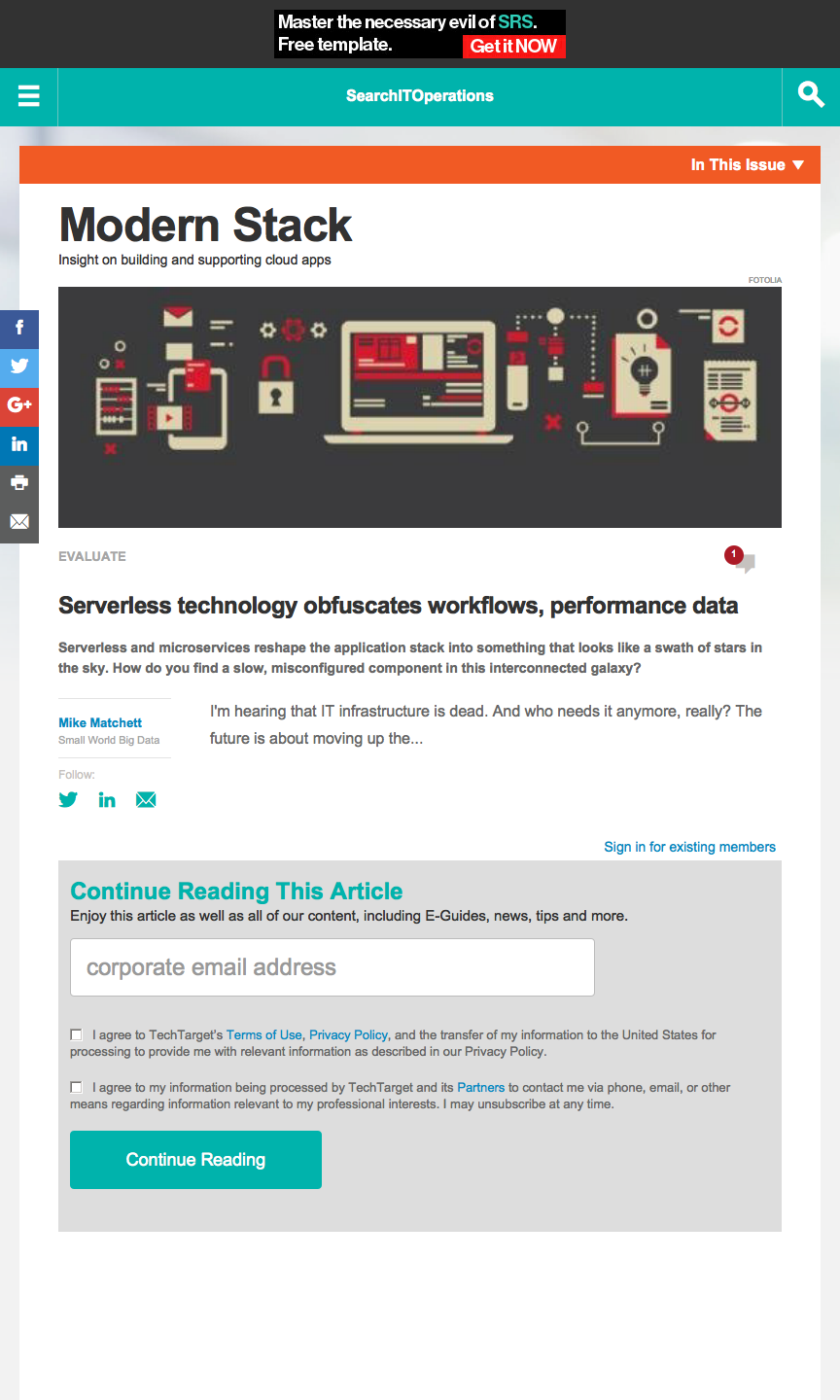Serverless technology obfuscates workflows, performance data

An IT industry analyst article published by SearchITOperations.
 Serverless and microservices reshape the application stack into something that looks like a swath of stars in the sky. How do you find a slow, misconfigured component in this interconnected galaxy?
Serverless and microservices reshape the application stack into something that looks like a swath of stars in the sky. How do you find a slow, misconfigured component in this interconnected galaxy?
Mike Matchett
Small World Big Data
I’m hearing that IT infrastructure is dead. And who needs it anymore, really? The future is about moving up the stack to microservices and serverless technology, as we continue to abstract, embed and automate away all the complexities of explicit infrastructure layers, such as storage arrays and physical servers.
On-premises, Capex-style IT is shrinking, while rented and remotely managed hardware and cloud transformation set new standards for modern IT. All the cool kids use end-to-end orchestration, advanced machine learning, real-time management data streams, microservices architecture and insanely scalable container environments. And now we even have serverless computing, sometimes called function as a service (FaaS).
But can we have computing without the server? And where did the server go?
Serving more with serverless technology
There is a certain hazard in my life that comes from telling non-IT people that, as an IT industry analyst, I explore and explain technology. I’m asked all the time, even by my mom, questions like, “I suppose you can explain what the cloud is?”
I tend to bravely charge in, and, after a lot of at-bats with this question, I’ve got the first 25 seconds down: “It’s like running all your favorite applications and storing all your data on somebody else’s servers that run somewhere else — you just rent it while you use it.” Then I lose them with whatever I say next, usually something about the internet and virtualization.
The same is mostly true with serverless computing. We are just moving one more level up the IT stack. Of course, there is always a server down in the stack somewhere, but you don’t need to care about it anymore. With serverless technology in the stack, you pay for someone else to provide and operate the servers for you.
We submit our code (functions) to the service, which executes it for us according to whatever event triggers we set. As clients, we don’t have to deal with machine instances, storage, execution management, scalability or any other lower-level infrastructure concerns.
The event-driven part is a bit like how stored procedures acted in old databases, or the way modern webpages call in JavaScript functions, hooked to and fired off in response to various clicks and other web events. In fact, AWS Lambda, a popular serverless computing service, executes client JavaScript functions, likely running Node.js in the background in some vastly scalable way.
Look ma, no server!
We need to tackle several issues to ready serverless technology for primetime enterprise use. The first is controlling complexity…(read the complete as-published article there)
